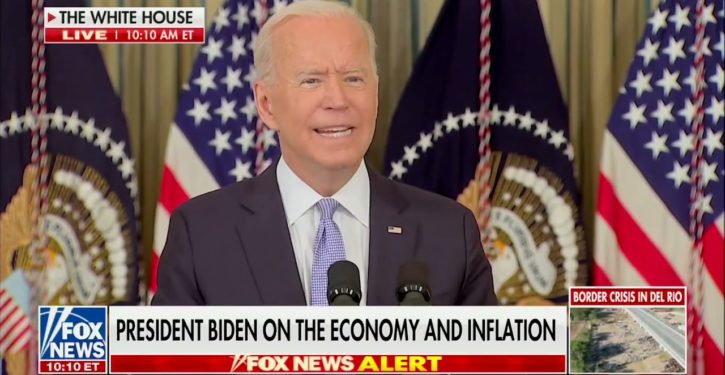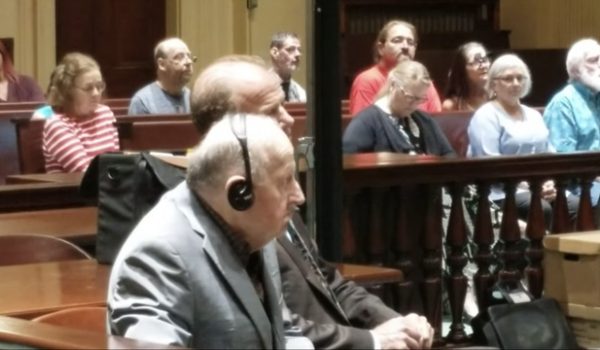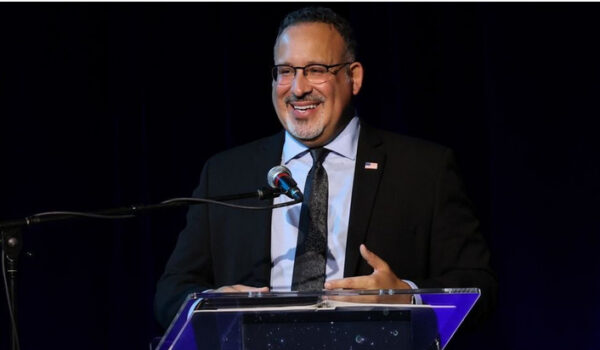
The Washington Post reports “that the budget deficit is set to 𝒅𝒐𝒖𝒃𝒍𝒆 to $2 trillion this year. This is basically unprecedented in U.S. history during relative peace and prosperity,” notes economist Brian Riedl. This is due to a “massive spending spree” by President Biden, soaring interest rates on the national debt that resulted from Biden’s policies, and continuing increases in entitlement spending, notes Riedl:
This year’s 7.6% of GDP budget deficit has been exceeded only during the depths of World War II, the great recession, and pandemic. Deficits didn’t even hit these heights during the Great Depression, Korean War, Vietnam War, or Reagan defense build up.
Deficits are supposed to rise during war & recessions and then fall during peace & prosperity. A $1 trillion jump in a single year with no war or recession has long been considered nearly impossible. (These figures exclude the student loan bailout that was never implemented).
What happened was falling revenues as inflation came back down, a massive spending spree by President Biden and Congress, and soaring interest rates that *doubled* Washington’s net interest costs in just two years.
But really, the bill is coming for past decisions – massive Social Security & Medicare costs for retiring baby boomers, and continued fiscal expansions by politicians who believed that government borrowing was free because interest rates would keep falling forever. So wrong.
It is frustrating because this is the exact scenario – unreformed SocSec & Medicare benefits plus politician spending sprees become the dynamic stick that gets lit by rising interest rates – that I (and a few others) have spent the past several years screaming is coming.
Instead, we were told SocSec and Medicare cannot add to deficits, and we need an “ice cream party” of trillions in new spending that we’d be foolish to pay for because interest rates are low – as if rates would never rise again.
The U.S. has behaved like a shortsighted subprime borrower using low interest rates to make massive new borrowing commitments – except the debt commitments were forever, but the interest rates were short-term adjustable rates. Anyone should have seen this coming.
The Post quoted Riedl noting that the rapidly rising national debt, “growing much faster than the economy, will drive up interest rates, reduce economic investment, and over time make interest payments the largest federal expenditure — risking a federal debt crisis.” The Post also cited the negative impact on the deficit of Biden’s Inflation Reduction Act, which increased the size of the deficit, rather than shrinking it the way Biden claimed it would. The Inflation Reduction Act was supposed to cost $433 billion, while increasing taxes by more than $739 billion, thus reducing the national debt by $300 billion. But instead, it will cost $1.2 trillion, adding another $500 billion to the national debt. Much of its spending may be wasted: It has been called “a recipe for corruption and waste.” As the Wall Street Journal notes,
The Inflation Reduction Act may go down as one of the greatest confidence tricks on taxpayers in history. Democrats used accounting gimmicks to claim the partisan law would reduce the budget deficit. But now a Goldman Sachs report projects its myriad green subsidies will cost $1.2 trillion—more than three times what the law’s supporters claimed.
While the economy may be lackluster, it is not in a recession, so the government should not be running a budget deficit, especially not a large deficit that spawns inflation and crowds out productive private investment. Biden slowed the economy’s growth by vastly expanding the complexity and scale of federal red tape and regulations. The Washington Times reported that “President Biden is unleashing a tidal wave of red tape, nearly tripling the number of the most costly regulations from the Trump era.” Due to Biden’s policies, people waste time filling out forms rather than developing new products, such as lifesaving medicines and medical devices. The government should be getting rid of pointless red tape that wastes countless hours of people’s and businesses’ time. But instead, Biden has made regulations and the tax code more complex and confusing.
President Biden’s policies caused inflation, according to even Democratic economists like Harvard’s Larry Summers — who was Treasury Secretary under President Clinton — and Obama economic advisor Steven Rattner. As Rattner noted in the New York Times, Biden has spent “an unprecedented amount” of taxpayer money, which resulted in “too much money chasing too few goods.”
To quell the rapidly rising inflation caused by Biden’s policies, the Federal Reserve was forced to raise the Federal Funds interest rate, which indirectly contributed to rising interest rates on the national debt. That in turn increased the large budget deficits that already were occurring due to Biden’s big spending.
Soon after taking office, Biden pushed through $1.9 trillion in unneeded stimulus spending. But the economy was already growing rapidly by the time Biden proposed that stimulus package, so no fiscal “stimulus” was needed, much less $1.9 trillion in new spending. Biden’s stimulus spending worsened inflation, according to Federal Reserve Bank economists.
Biden’s $1.9 trillion stimulus contained provisions that actually harmed employment and cut economic growth. “Biden’s $1.9 trillion ‘rescue plan’ isn’t saving the economy. It’s holding it back” by preventing job growth, wrote Peter Suderman in Reason Magazine soon after it was enacted and failed to do what Biden said it would.
Instead of kick-starting the economy as promised, Biden’s Rescue Plan is holding it back….Biden’s recovery plan paid people not to work. So it is hardly surprising that they are now not working… some of those jobs may simply not come back, leaving employers, consumers, and workers worse off… Jason Furman, who chaired President Barack Obama’s Council of Economic Advisers, cautioned this week that [it] was likely slowing job growth… And there may be further consequences yet: Inflation is ticking up, with consumer prices growing at a faster rate than they have in a decade.
Biden’s proposed “Build Back Better” plan would lead to still more inflation, according to economists across the political spectrum. Former Congressional Budget Office Director Doug Elmendorf said it will “push up” inflation. The Committee for a Responsible Federal Budget’s Marc Goldwein said it would create “inflationary pressures.” Bank of America’s Ethan Harris said it will “create even more price pressure.”
So would Biden’s proposed $2 trillion infrastructure package. Federal meddling in local infrastructure projects has already radically increased the cost of highways since the early 1970s, notes legal scholar Walter Olson. Spending per mile on interstate highway construction more than tripled, after taking inflation into account. Federal laws passed in 1970, 1972, and 1973 made it easier for citizens and special-interest groups to “contest infrastructure projects, driving up their cost and delaying their implementation and completion.”
The federal government delays local infrastructure projects with all sorts of unnecessary rules that other countries reject as wasteful and expensive. Construction of public infrastructure is slow and costly in the United States compared with Europe. New York City subways are a famous example: The Second Avenue line now being partially constructed — a century after it was originally proposed — costs six times as much as a comparable subway line in Paris. Dutch road crews built an entire highway overpass over a single weekend. Such rapid construction seldom happens in the U.S.
As infrastructure construction has slowed as a result, President Biden has proposed yet more federal meddling in intervention through his proposed $2 trillion infrastructure plan, which would make infrastructure more costly. Economist Chris Edwards says Biden’s plan will damage America’s infrastructure while shrinking our economy. He calls it “Biden’s anti-infrastructure plan“. He notes that the “Tax Foundation estimated that Biden’s tax increases would reduce investment in fixed assets, including infrastructure, by more than $1 trillion,” harming private infrastructure such as “power stations, freight railways,” and “pipelines.”
Biden is spending tens of billions of dollars on harmful boondoggles that waste energy and increase traffic congestion.



